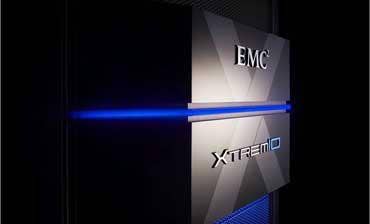The Wait Is Over: EMC Unleashes XtremIO All-Flash Storage Array

EMC on Thursday ended an 18-month wait to see how it would tackle the nascent all-flash storage market with the formal introduction of its XtremIO all-flash array.
While competitors, mainly small startups but some storage heavyweights as well, have taken advantage of the time between EMC's May 2012 acquisition of Israel-based XtremIO and the final unveiling of the array, the storage vendor has not been idle.
"This is simply by far the best all-flash array in the market," said Ehud Rokach, vice president and general manager of EMC's XtremIO product and the CEO of XtremIO before the EMC acquisition.
[Related: Competitors Chime In On EMC's XtremIO Rollout Before It Hits ]
It has been a busy 18 months for EMC. The company has already seen over 100 customers deploy the technology across all industry verticals and across all manner of use cases including virtualized data centers and desktop infrastructures, as well as for high-performance applications including databases and on-line transaction processing, Rokach said.
Thursday marks the formal launch of EMC XtremIO. Customers globally can begin placing orders now, with shipping slated to begin Nov. 19, Rokach said.
When asked what the significance of Thursday was for unveiling availability, Rokach said he did not know. "It was a directive to our team," he said. "The general availability date was directed by the readiness of our production, our global services organization, and our manufacturing organization."
The channel is ready.
Lumenate, a Dallas-based solution provider and EMC partner that got its first trial unit of the EMC XtremIO before EMC acquired XtremIO, is planning a major event for the launch it calls "Architect your Cloud in a Flash." The solution provider is also doing a simultaneous videocast with EMC at launch time.
Jamie Shepard, regional vice president of Lumenate, said that the system in his company's lab is showing the best numbers he's seen for virtual desktop infrastructure storage numbers.
"We're doing VMware vMotions on it," Shepard said. "It's screaming fast."
Shepard said XtremIO appears to cost less than all-flash storage solutions from companies such as Violin Memory, and that EMC is showing what he called an "incredible road map" for the technology.
NEXT: EMC XtremIO Finally Ready
Jeffrey Flowers, a technical consultant with eGroup, a Mt. Pleasant, S.C.-based solution provider and EMC partner that also had early access to EMC XtremIO, said he expects the technology to do well in virtual desktop implementations and wherever low latency is required.
Flowers also dismissed concerns that EMC has remained on the sidelines while its all-flash array competitors have been building their markets.
"The EMC name will help the company win out in a lot of markets because customers want to reduce the number of vendors they work with," he said. "A lot of customers of Violin Memory and others will be giving EMC a look. Companies that pioneered the virtual desktop and other niche markets will probably lose market share."
Customers are ready for EMC XtremIO, Flowers said. "A lot of enterprises have pursued other alternatives because EMC didn't yet pursue this market," he said.
EMC's Rokach described the EMC XtremIO as an all-flash array for block storage designed from scratch specifically to take advantage of flash memory performance.
It is sold in modules called "X-Bricks." The initial models are available with 10 TB of raw capacity, with 20-TB models slated to ship early next year. Up to four X-Bricks can be clustered together.
With in-line deduplication, that means customers by early next year will be able to configure about 250 TB of logical capacity with performance of about 1 million IOs per second, Rokach said. "You can expect that to grow over time," he said. "There's nothing in the architecture limiting it to four X-Bricks."
However, he said, XtremIO is about more than raw performance and includes some key enterprise features.
XtremIO allows capacity to be added automatically, with a single point of management and a single namespace solution.
In-line deduplication of data is performed at wire speed because data, as it comes in, is mapped based on content, not on its physical address, Rokach said.
"It looks at granular blocks of data coming into the array and fingerprinting those blocks according to content," he said. "This provides a balance in processing and the management of I/O within the array."
NEXT: Proprietary Data Protection For EMC XtremIO
Metadata for the XtremIO contents is managed inside the array in an efficient manner, which Rokach said is unusual. "This ensures the metadata is always available, and ensures guaranteed performance," EMC's Rokach said.
That function also helps in provisioning virtualized data centers, he said.
"Virtualization and VDI can create huge backlogs in an array," Rokach said. "We handle it in memory, not in the flash storage, so we get instant cloning and provisioning of desktops and servers."
EMC XtremIO also uses a proprietary data protection scheme, called XDP, which differs from traditional RAID, Rokach said.
"This increases the reliability and endurance of flash memory while using only 8 percent of capacity for overhead," he said. "With flash, you don't want to pay a performance penalty for data protection, because flash is all about performance. And you don't want to pay an efficiency penalty. So we have a data protection scheme with low overhead and high efficiency."
The result, Rokach said, is performance four times better than that of traditional RAID 5 or RAID 6, with four times fewer write operations inside the array.
"It's a magical combination of performance, efficiency and reliability," he said.
PUBLISHED NOV. 14, 2013